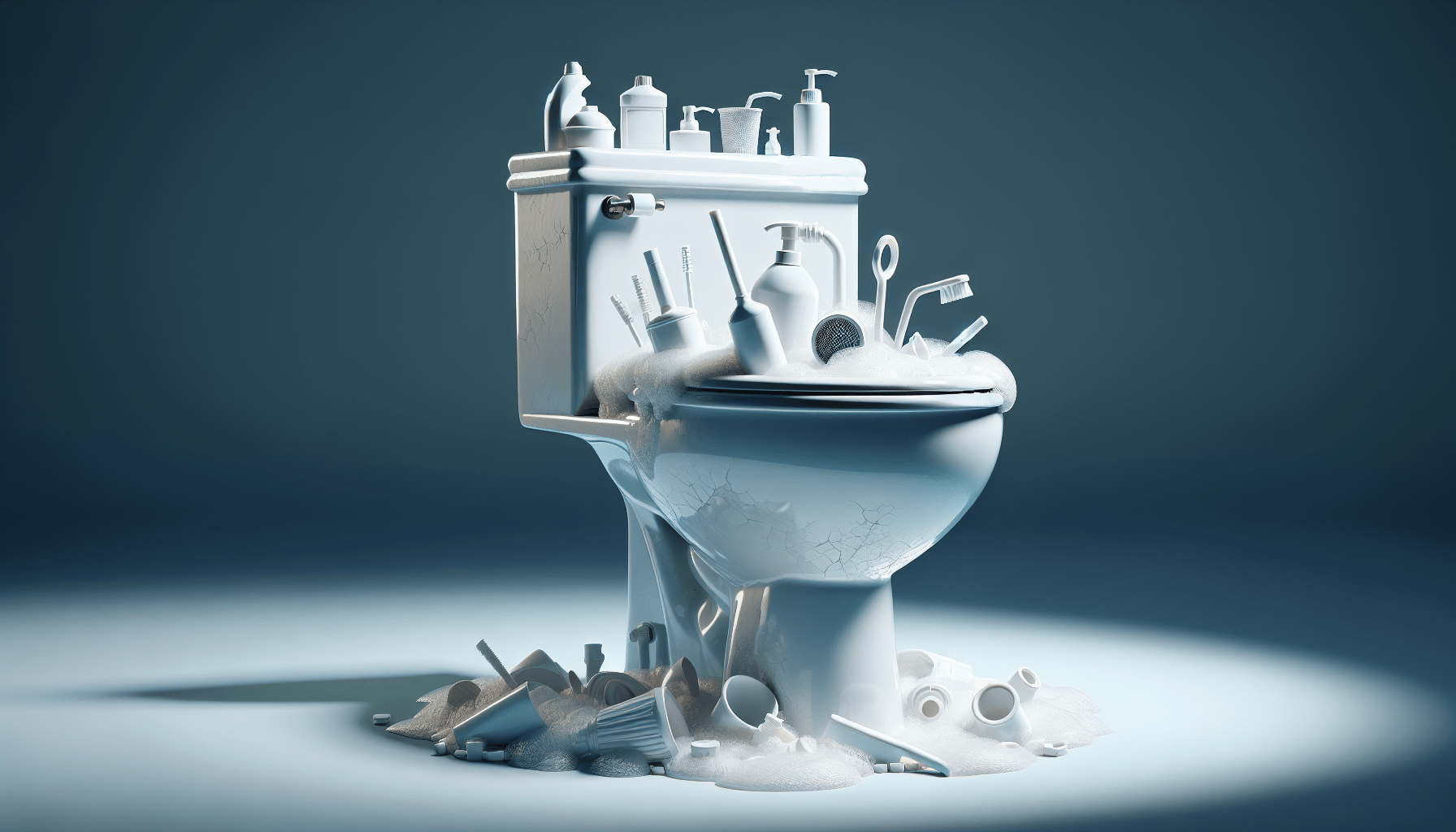If you’ve ever found yourself staring at a clogged toilet, desperately searching for a solution, you’ve likely wondered – is Liquid Plumber safe for toilets? You’re not alone. Many of us have been confronted with this dilemma, unsure of how to effectively and safely unclog our toilets without causing any damage. In this article, we’ll explore the topic of using Liquid Plumber on toilets, providing you with all the information you need to make an informed decision and ultimately keep your bathroom plumbing in tip-top shape.
Is Liquid Plumber Safe For Toilets?
Understanding Liquid Plumber
Liquid Plumber is a popular brand of drain cleaner that is commonly used to unclog drains and pipes. It comes in liquid form and contains powerful chemicals that break down and dissolve various substances, such as hair, grease, and food particles, that can cause blockages in plumbing systems. While Liquid Plumber can effectively unclog drains in sinks and showers, many people wonder if it is safe to use in toilets.
Common Toilet Problems
Toilets can experience a range of problems, from minor issues like a slow drain or weak flush, to more serious ones like a clogged or overflowing toilet. These problems can be caused by various factors, including excessive toilet paper usage, flushing down inappropriate items, or a buildup of mineral deposits or debris in the pipes. Liquid Plumber is often seen as a convenient solution to these problems, but it is important to understand the potential risks associated with using it in toilets.
Risks of Using Liquid Plumber in Toilets
While Liquid Plumber can effectively dissolve and clear many types of clogs, it is not specifically designed for use in toilets. Toilet plumbing systems are different from other drains and pipes in the house, and using a drain cleaner that is not formulated for toilet use can lead to potential risks. The chemicals in Liquid Plumber may not work effectively in the curved pipes of a toilet, and they can also damage the rubber or plastic components of the toilet, such as the flapper or seals. This can result in leaks, further clogs, and even costly repairs.
Chemical Composition of Liquid Plumber
To understand the potential risks of using Liquid Plumber in toilets, it is important to know its chemical composition. The main active ingredient in Liquid Plumber is sodium hydroxide, also known as lye or caustic soda. Sodium hydroxide is a highly corrosive substance that can cause severe burns and eye damage. Other ingredients in Liquid Plumber may include surfactants, corrosion inhibitors, and fragrance. It is crucial to handle Liquid Plumber with care and follow the safety instructions provided by the manufacturer.
Effectiveness of Liquid Plumber for Toilet Clogs
While Liquid Plumber may be able to dissolve certain types of toilet clogs, its effectiveness can vary depending on the nature and severity of the clog. For minor clogs caused by soft blockages like toilet paper or waste, Liquid Plumber might provide a temporary solution. However, for more stubborn or complex clogs, it is unlikely that Liquid Plumber alone will be sufficient to completely clear the blockage. In such cases, it is advisable to seek professional plumbing assistance to avoid further complications.
Alternative Methods for Clearing Toilet Clogs
Instead of relying solely on Liquid Plumber, there are several alternative methods for clearing toilet clogs that can be more effective and safer. One common method is using a plunger, which creates suction to dislodge the blockage. Another option is using a plumbing snake, a flexible tool that can be inserted into the toilet drain to physically break up or extract the clog. Additionally, there are enzyme-based or natural drain cleaners available that utilize a gentler approach to unclog pipes without the use of harsh chemicals.
Preventive Measures for Toilet Maintenance
To prevent toilet clogs and maintain a healthy plumbing system, it is important to follow some preventive measures. First, avoid flushing down items that are not designed to be flushed, such as baby wipes, cotton balls, or sanitary products. Additionally, using less toilet paper and flushing multiple times for larger waste can help reduce the risk of clogs. Regular maintenance, such as periodic cleaning of the toilet and checking for any signs of leaks or blockages, can also help identify and address potential issues before they escalate.
Safe Usage of Liquid Plumber in Toilets
If you still choose to use Liquid Plumber in your toilet despite the potential risks, it is crucial to do so safely. Always wear protective gloves and goggles to avoid direct contact with the chemicals. Follow the manufacturer’s instructions carefully, including the recommended dosage and contact time. It is advisable to ventilate the area properly to minimize exposure to fumes. After using Liquid Plumber, thoroughly flush the toilet with water to remove any residual chemicals. If the problem persists or worsens, it is best to consult a professional plumber for assistance.
Eco-Friendly Alternatives to Liquid Plumber
If you are concerned about the potential risks of using Liquid Plumber and want to explore more eco-friendly alternatives, there are several options available. Enzyme-based drain cleaners are one such option, as they utilize natural enzymes to break down organic materials without causing harm to the environment or your plumbing system. Another alternative is a combination of baking soda and vinegar, which can create a chemical reaction that helps loosen and clear clogs. Regular preventive maintenance and keeping drains clean can also reduce the need for harsh chemicals.
Conclusion
While Liquid Plumber may be effective in unclogging drains and pipes, it is not recommended for use in toilets due to the potential risks it poses. The chemicals in Liquid Plumber can damage the toilet’s components and may not work effectively in the curved pipes of a toilet. It is important to explore alternative methods for clearing toilet clogs that are safer and more tailored to the toilet’s plumbing system. By following preventive measures and considering eco-friendly alternatives, you can maintain a healthy and functional toilet without compromising your safety or the environment.





